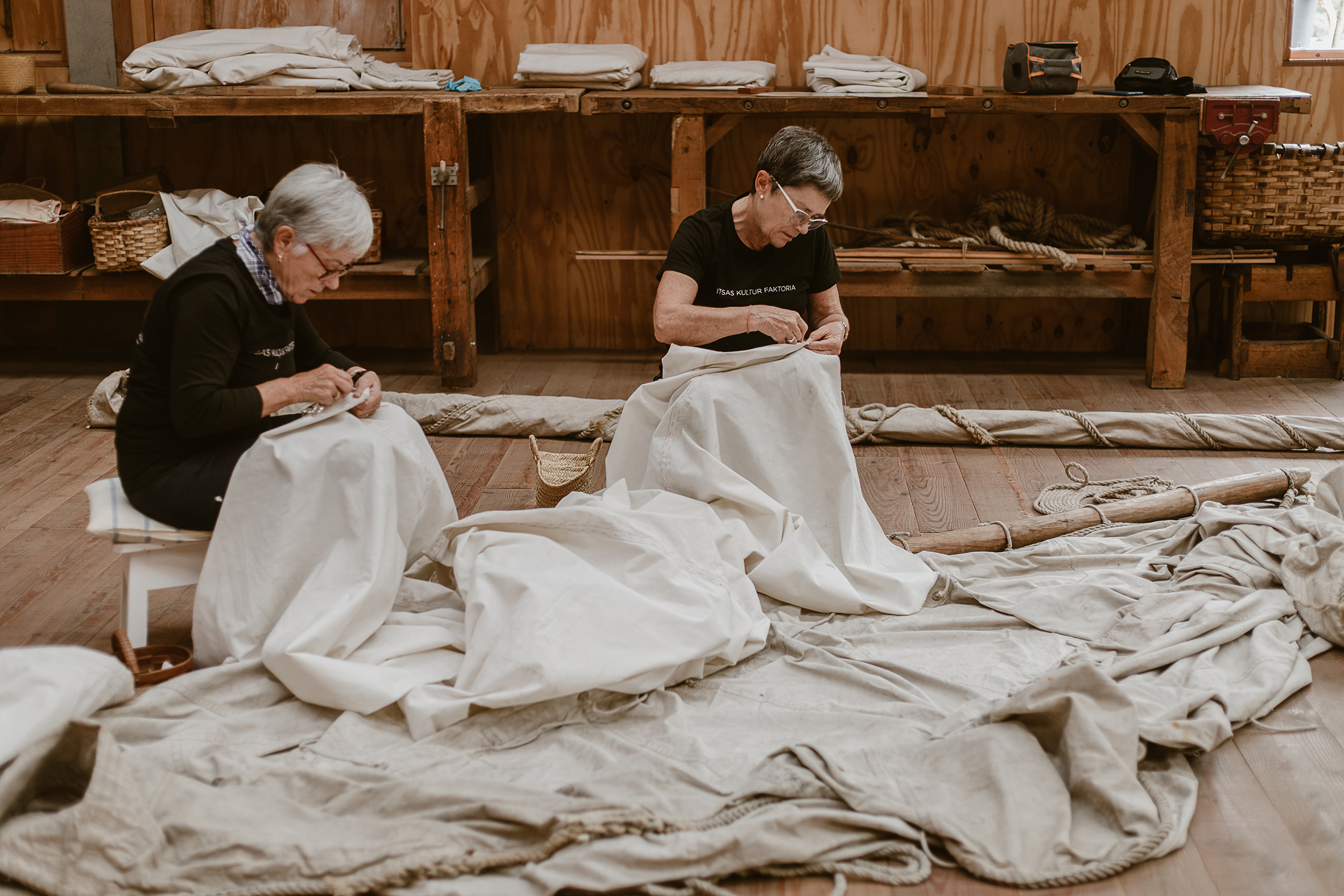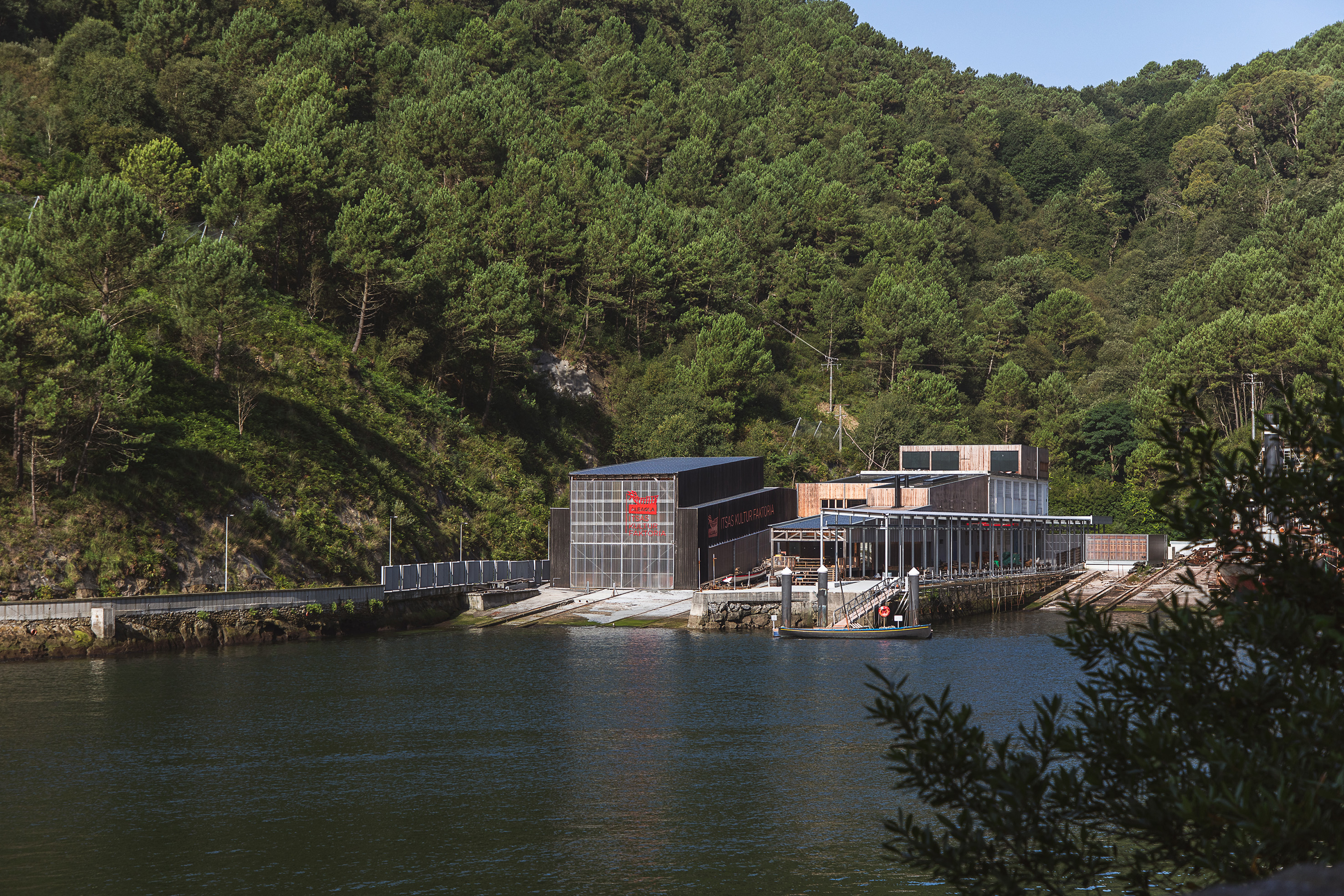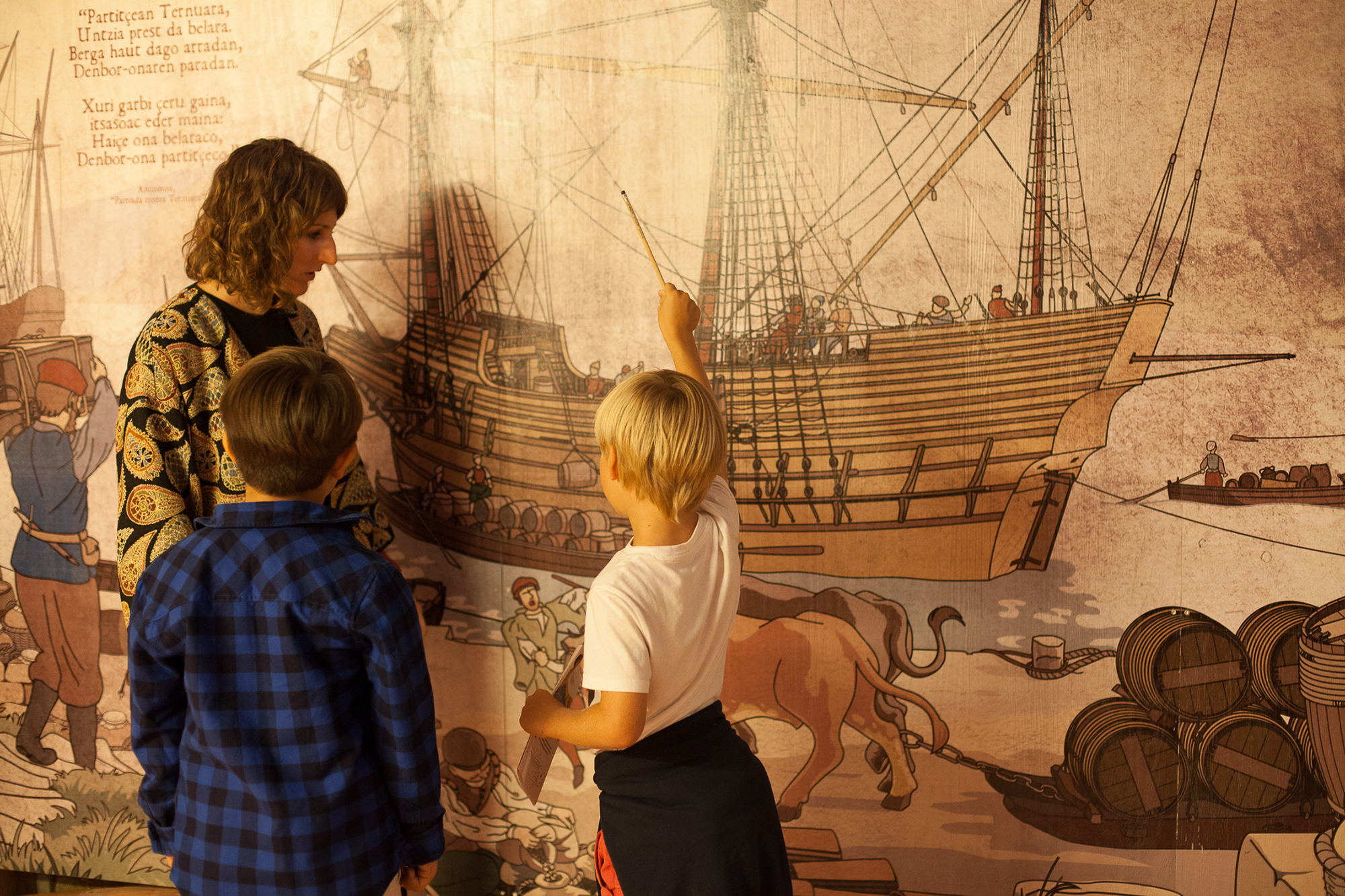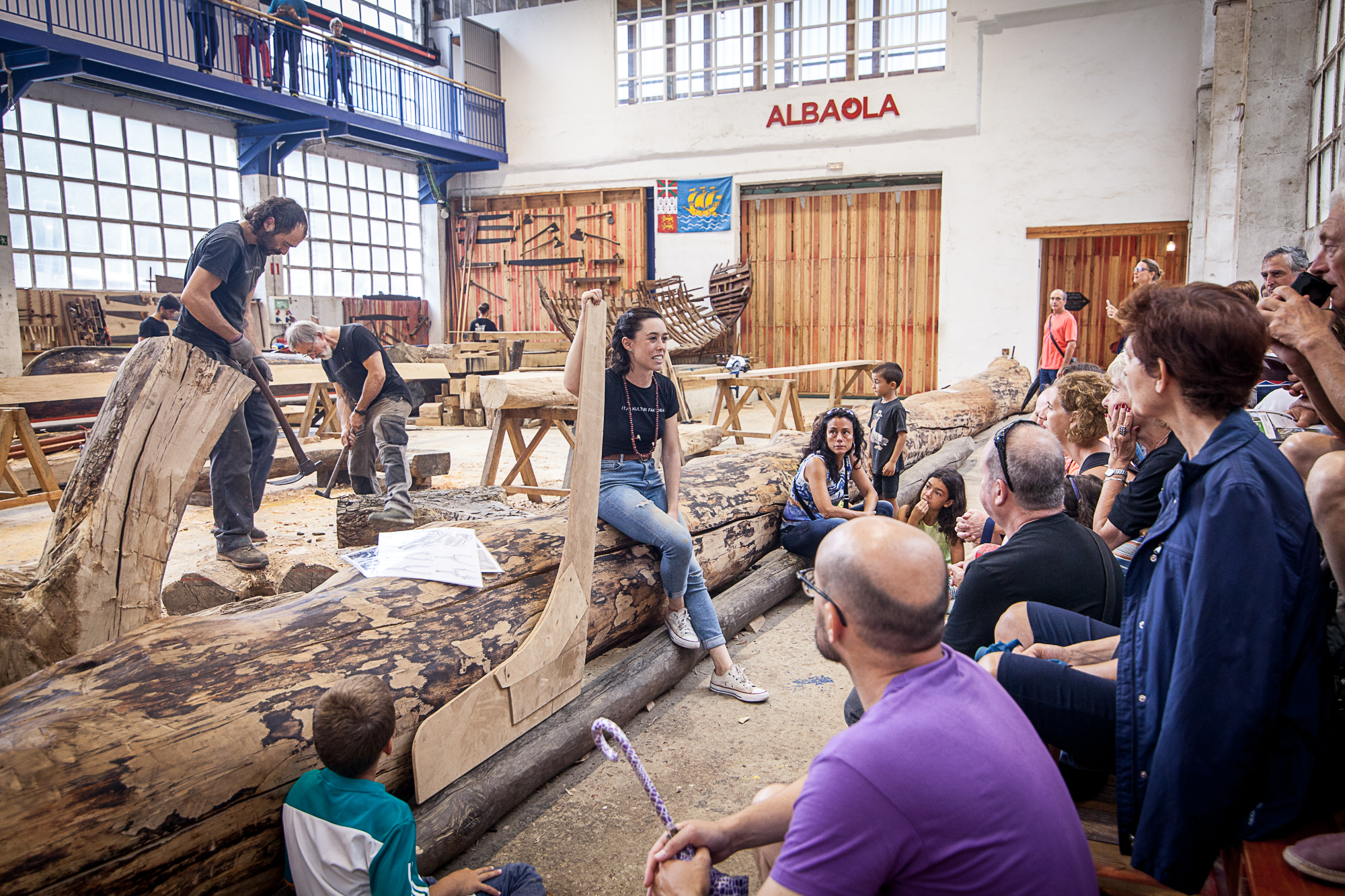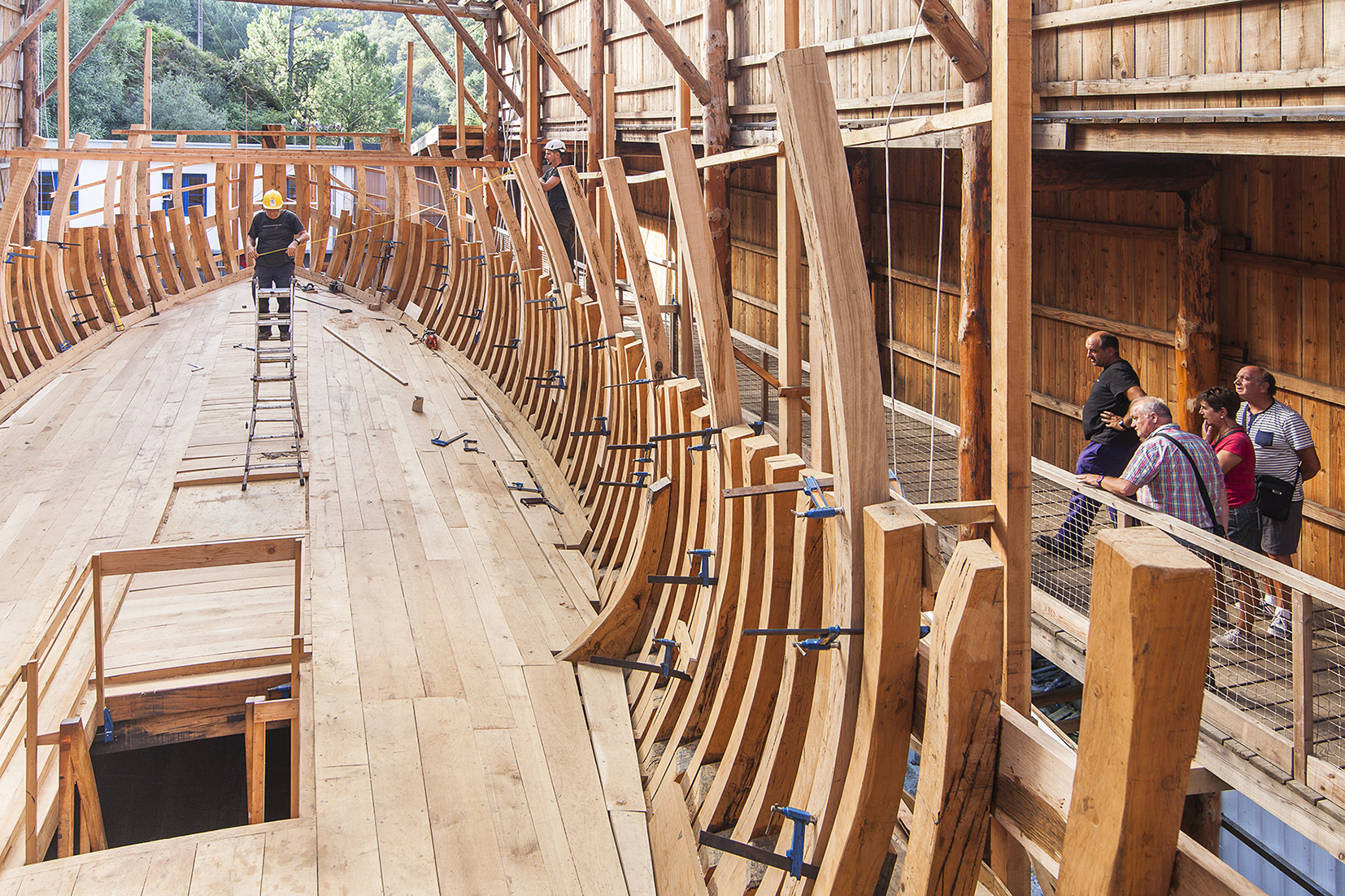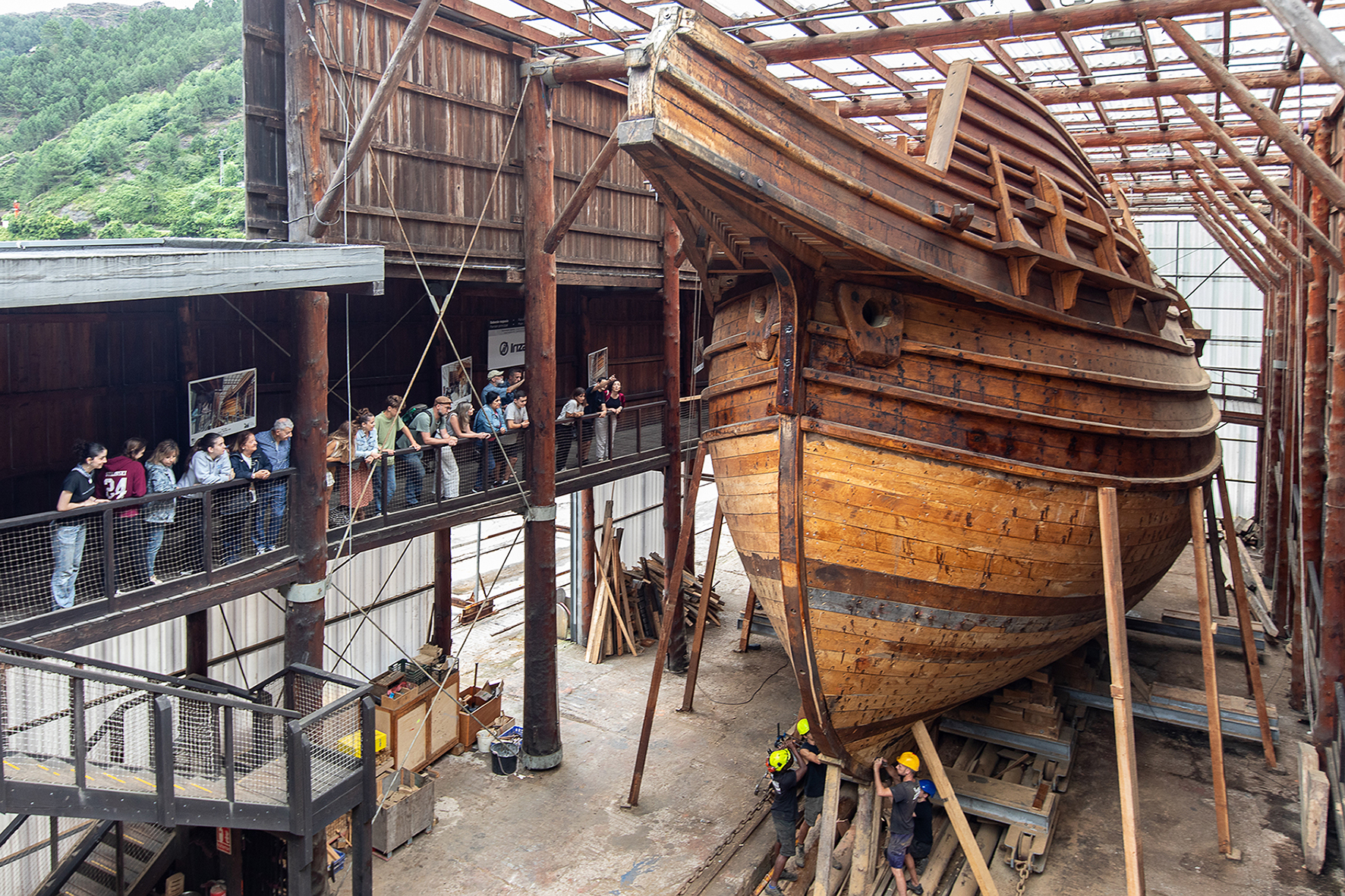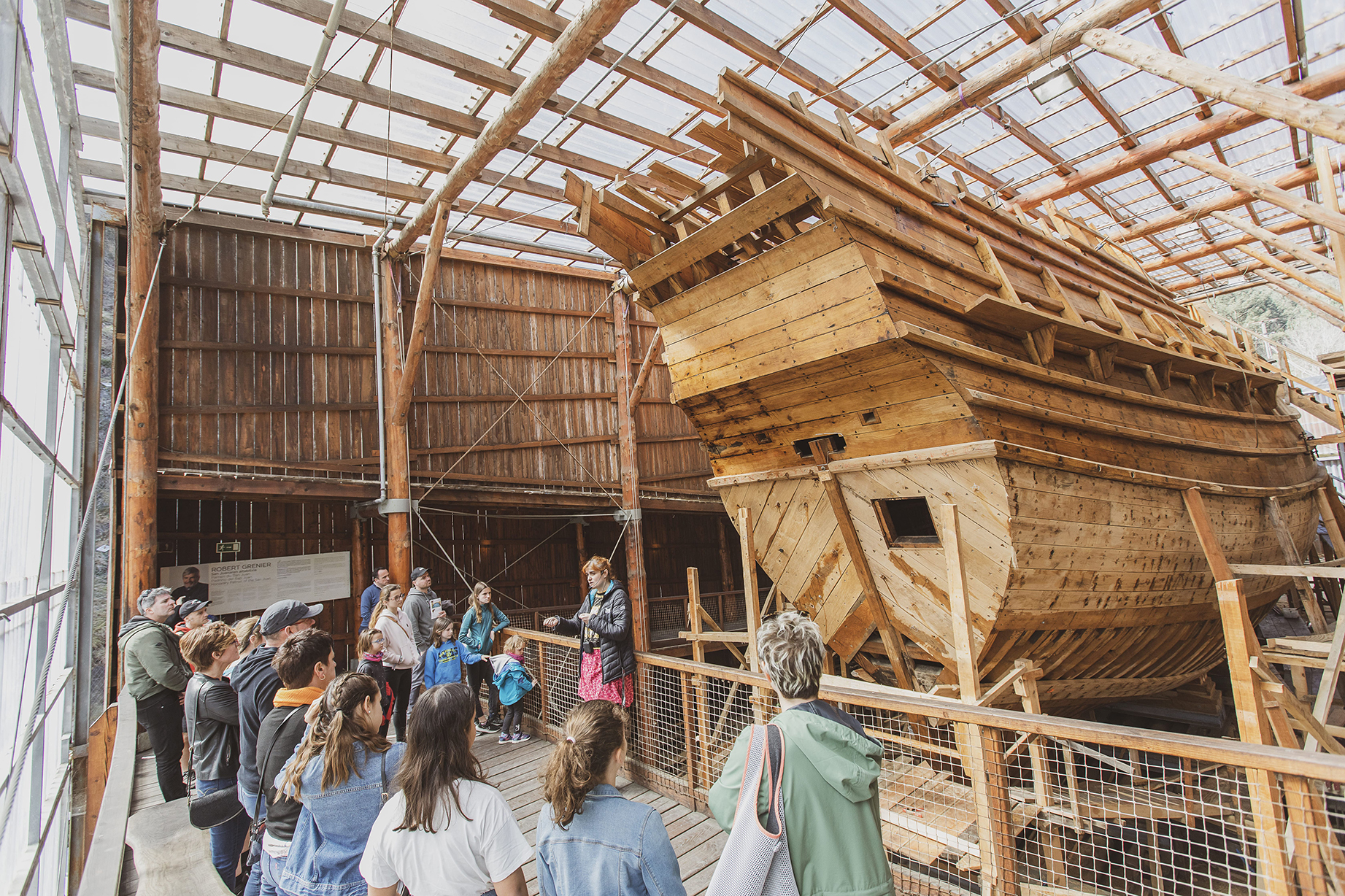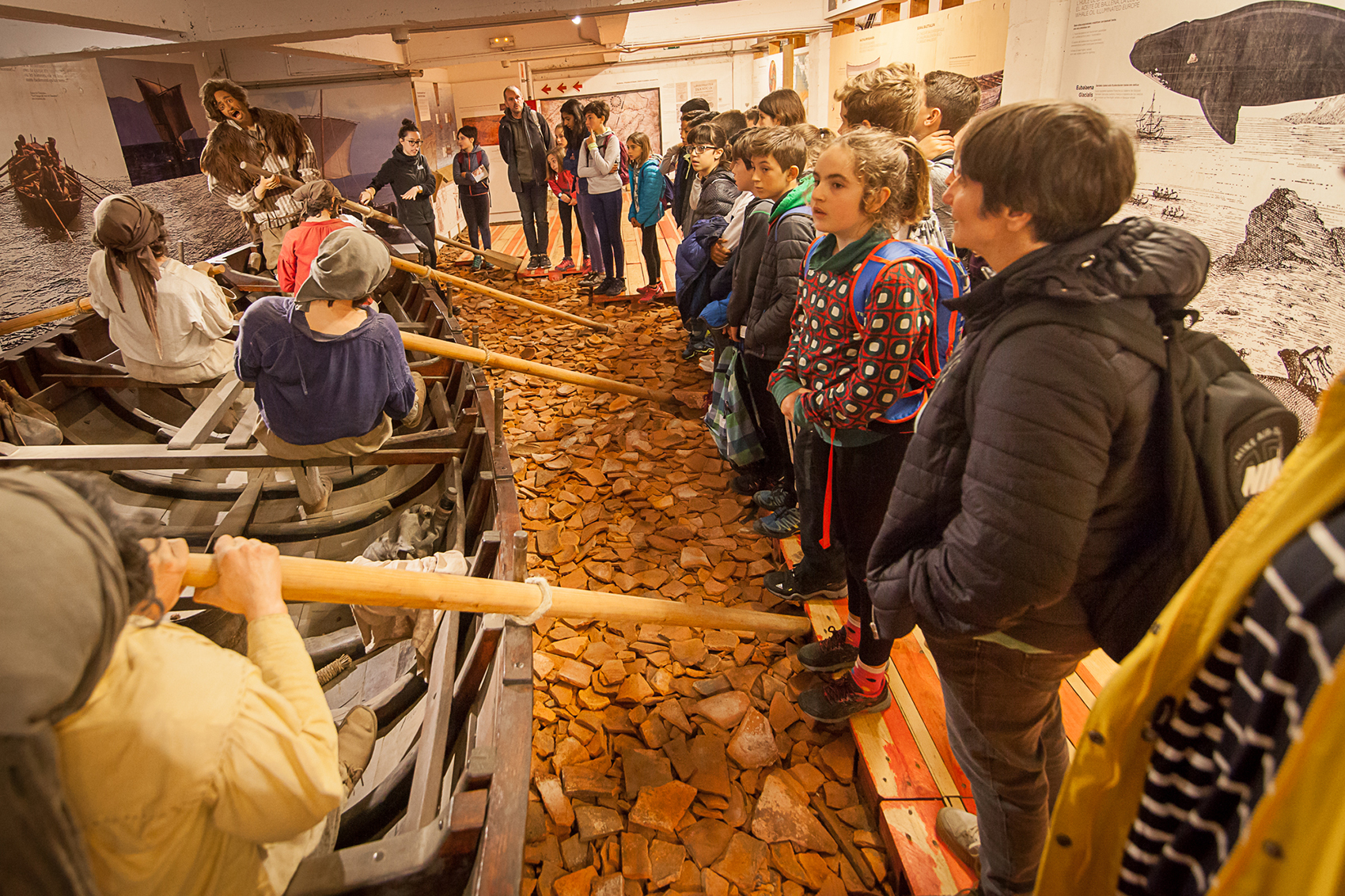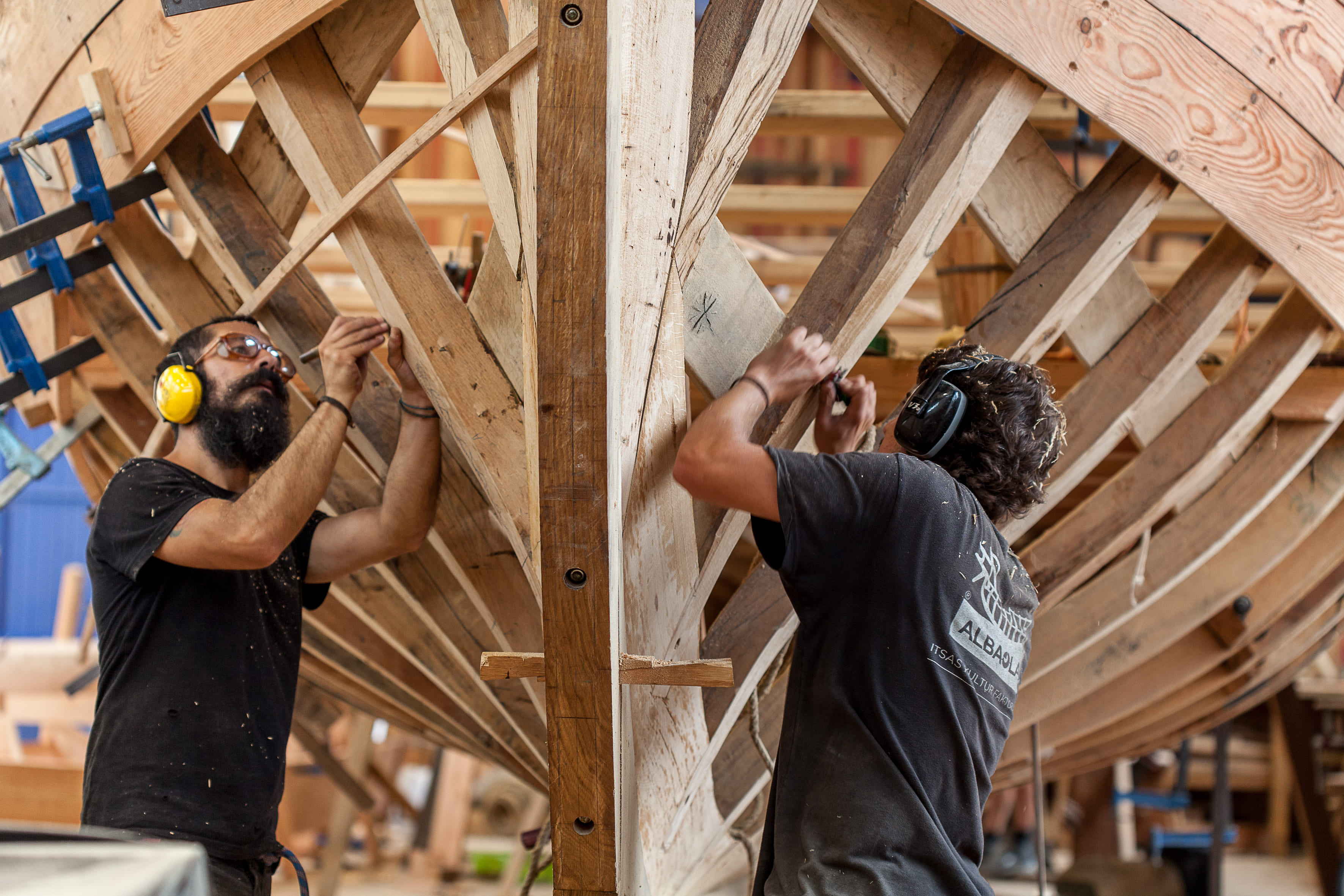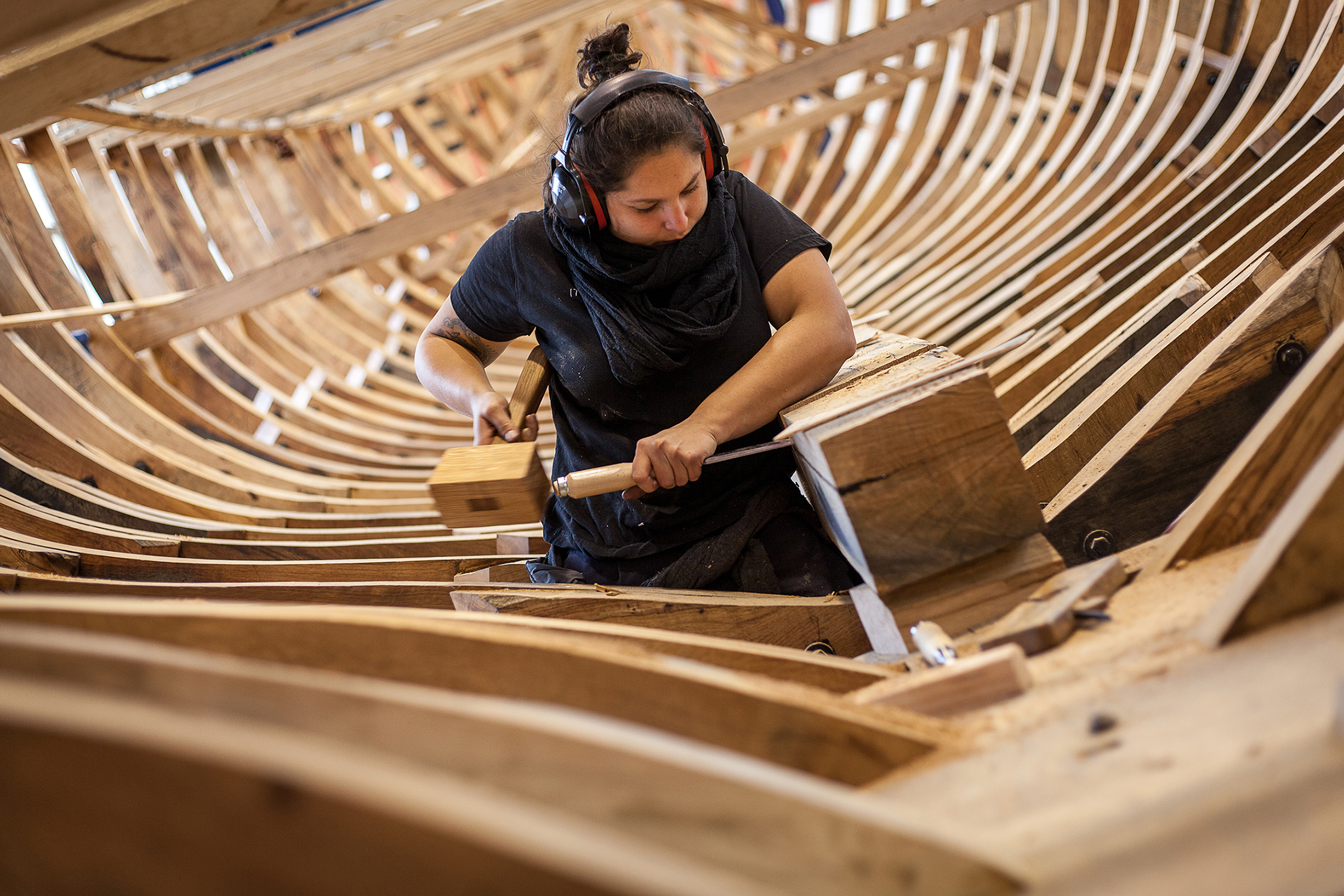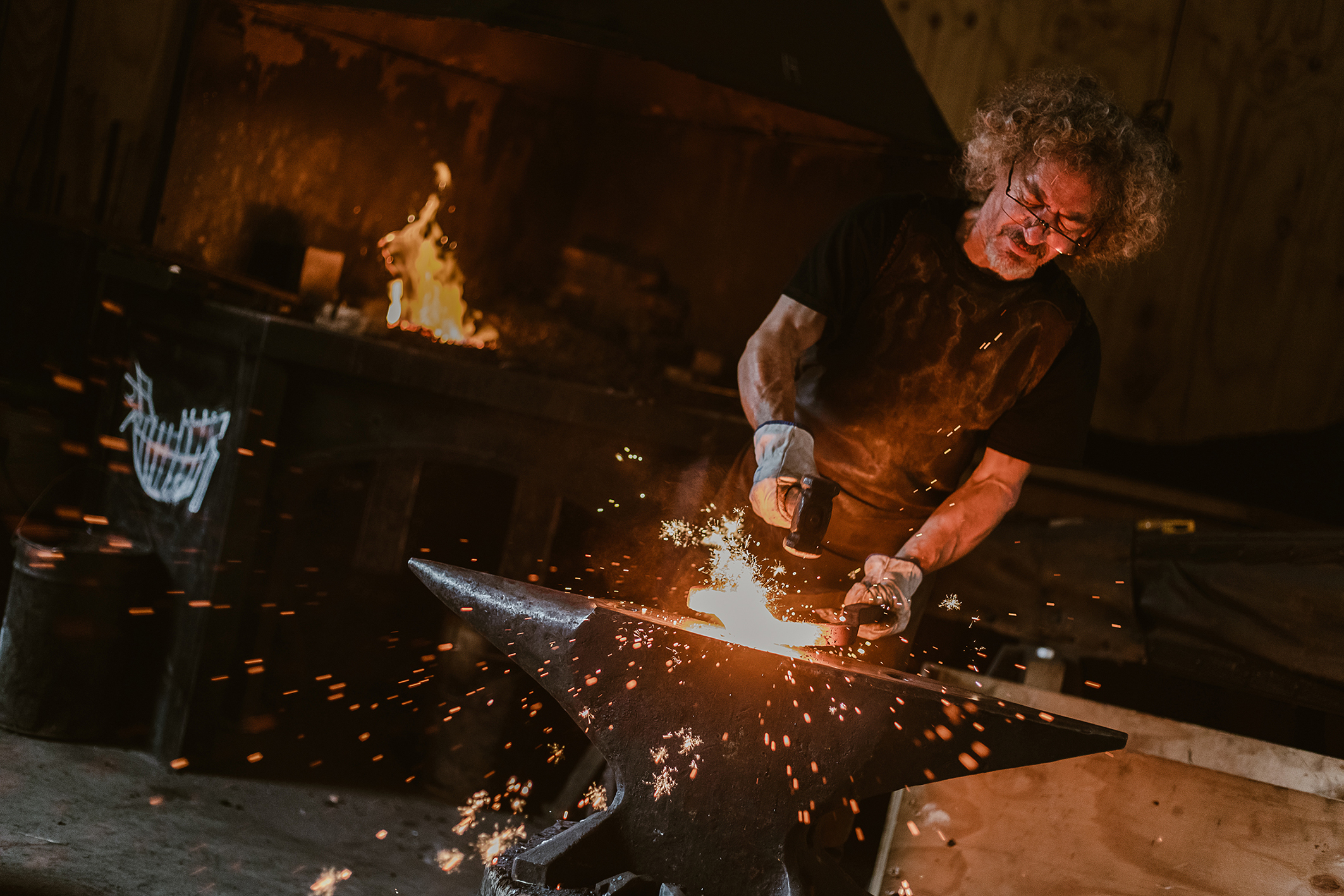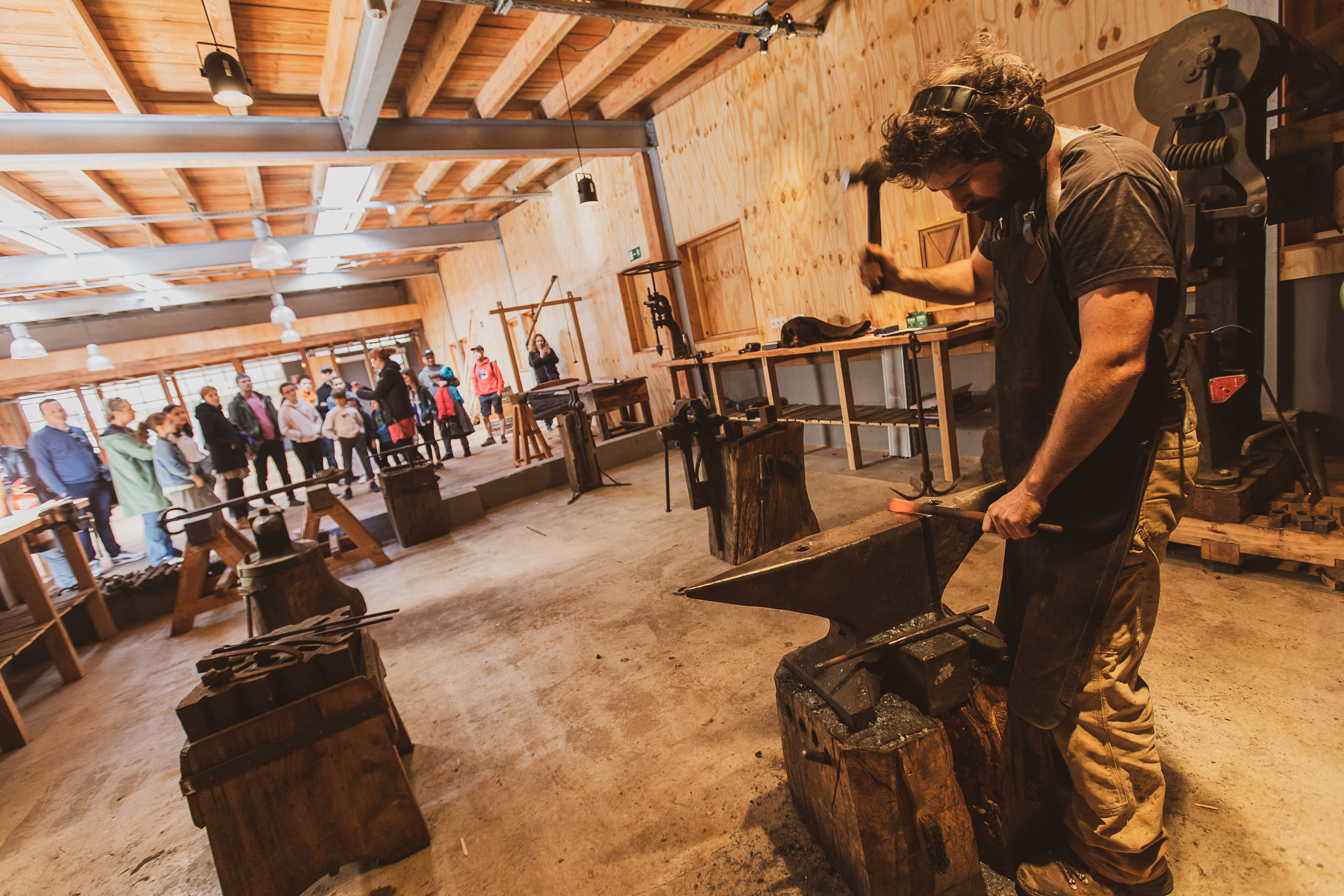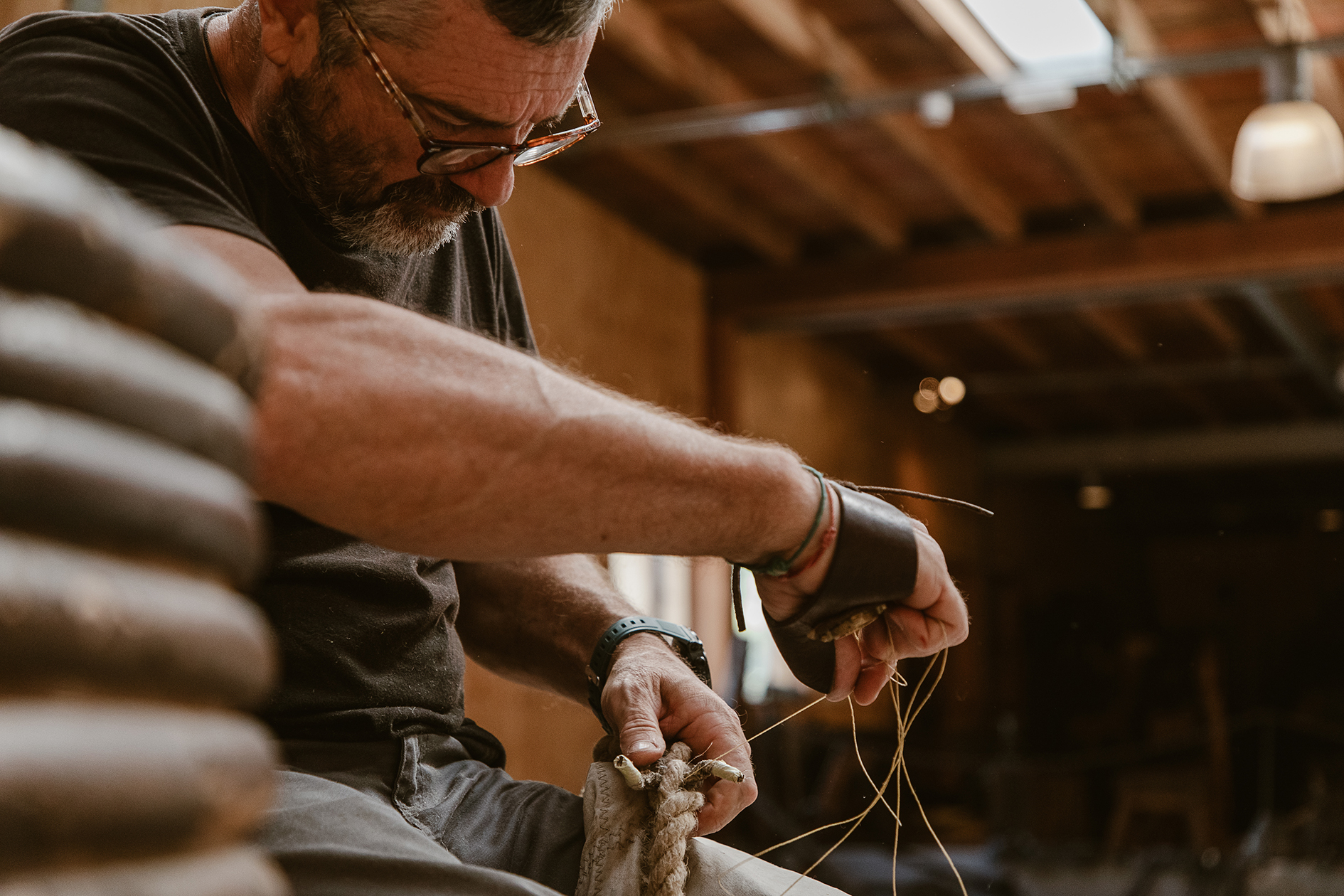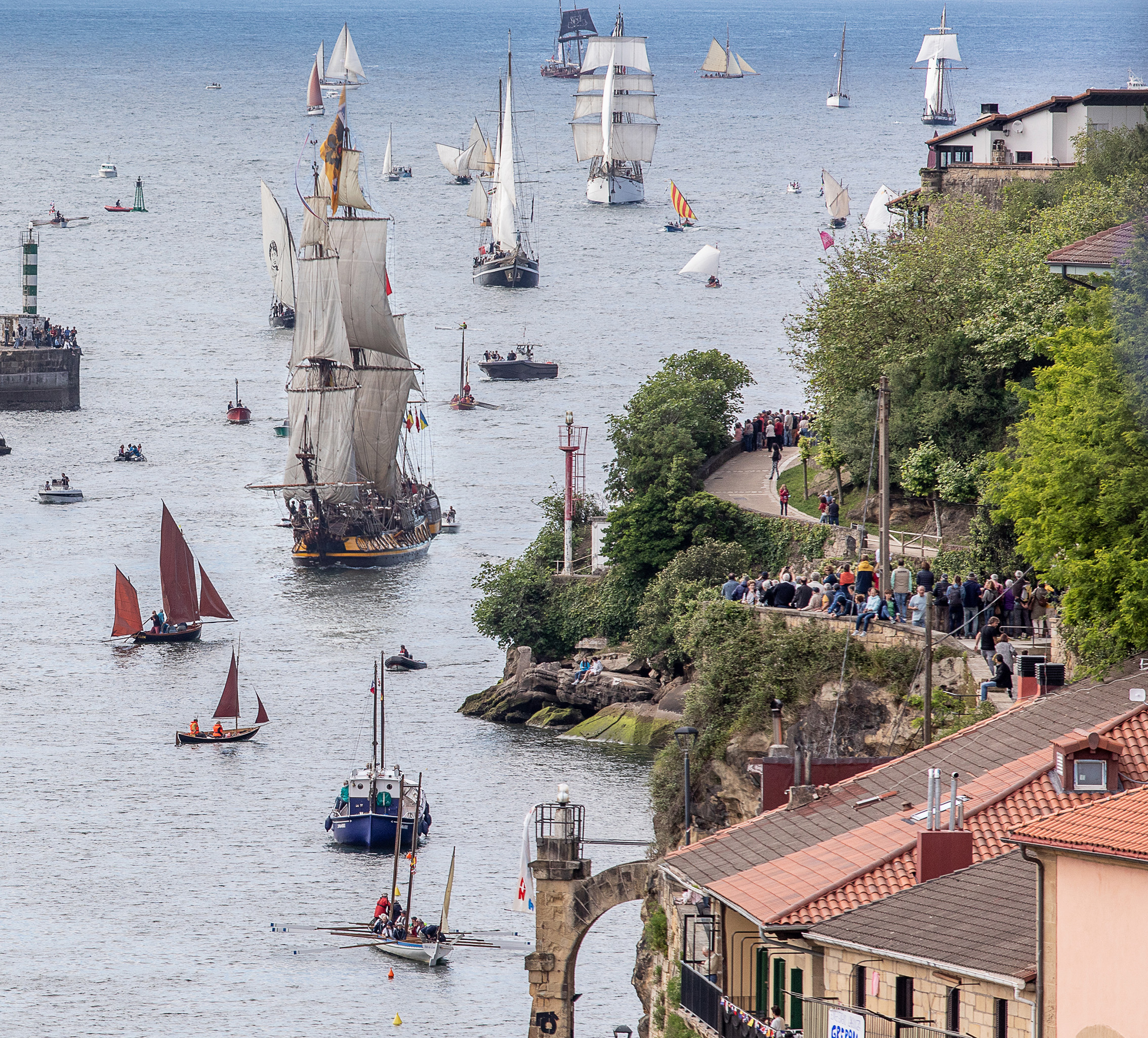Regaining a sense of belonging
Albaola Itsas Kultur Faktoria
Shipyard-museum of Basque maritime heritage. We are making history
Albaola Itsas Kultur Faktoria is a unique shipyard-museum focused on recovering and sharing maritime history. It restores heritage vessels using traditional techniques and materials. Its landmark project, reconstructing the 16th-century San Juan galleon, is the result of decades of research and a model of commemorative integrity. Albaola transforms its surroundings through cultural tourism, ancestral knowledge, and global collaboration, becoming a key reference in maritime heritage conservation.
Spain
National
It addresses urban-rural linkages
It refers to other types of transformations (soft investment)
Yes
2014-07-14
Yes
Creative Europe
No
No
As a representative of an organisation
The Albaola Itsas Kultur Faktoria project is an innovative initiative that rescues and promotes Basque maritime history through the construction and restoration of heritage boats, carried out in front of the public using traditional techniques and materials. It strongly focuses on sustainability, inclusion, and education.
Its most significant project is the reconstruction of the San Juan, a 16th-century Basque whaling galleon that sank in Red Bay (Canada). The project was conceived with a firm commitment to respecting the commemorative integrity of the ship, based on documentation compiled over 30 years of research by Parcs Canada, which entrusted Xabier Agote to undertake the construction phase.
Located in Pasaia (Basque Country, Spain), the Faktoria is a living shipyard-museum where visitors, participants, and volunteers can take part in the naval construction process following historical methods. Through experiential training programs and the observation of traditional craftsmanship, Albaola has successfully created a dynamic environment for transmitting ancestral knowledge to new generations while also revitalizing the local economy through cultural tourism and job creation in sectors linked to maritime heritage conservation.
Albaola’s impact extends globally thanks to its collaborations with institutions such as Parcs Canada, UNESCO, and various European and American universities, making it an international benchmark in maritime heritage recovery. Its model has proven effective in regenerating degraded spaces, preserving traditional skills, and raising awareness of the importance of maritime heritage in cultural identity.
Its most significant project is the reconstruction of the San Juan, a 16th-century Basque whaling galleon that sank in Red Bay (Canada). The project was conceived with a firm commitment to respecting the commemorative integrity of the ship, based on documentation compiled over 30 years of research by Parcs Canada, which entrusted Xabier Agote to undertake the construction phase.
Located in Pasaia (Basque Country, Spain), the Faktoria is a living shipyard-museum where visitors, participants, and volunteers can take part in the naval construction process following historical methods. Through experiential training programs and the observation of traditional craftsmanship, Albaola has successfully created a dynamic environment for transmitting ancestral knowledge to new generations while also revitalizing the local economy through cultural tourism and job creation in sectors linked to maritime heritage conservation.
Albaola’s impact extends globally thanks to its collaborations with institutions such as Parcs Canada, UNESCO, and various European and American universities, making it an international benchmark in maritime heritage recovery. Its model has proven effective in regenerating degraded spaces, preserving traditional skills, and raising awareness of the importance of maritime heritage in cultural identity.
Cultural Identity
Maritime Heritage
Local Culture
Dissemination and Knowledge Transfer
Sustainability
Albaola embodies a sustainability model based on reviving traditional shipbuilding techniques that minimize dependence on industrial materials. The construction of the San Juan employs locally certified wood, such as oaks from Sakana and fir trees from the Irati Forest, ensuring responsible forest resource management.
The project fosters a circular economy by reusing materials and revitalizing endangered trades, such as shipbuilding carpentry and traditional forging. Moreover, the transformation of the coastal environment where the Faktoria is located has turned a degraded space into a cultural and environmental reference point.
In terms of energy efficiency, Albaola has implemented sustainable solutions in its daily operations, reducing the environmental impact of the project. Its model is replicable in other communities seeking to integrate heritage conservation with sustainable development strategies.
The project fosters a circular economy by reusing materials and revitalizing endangered trades, such as shipbuilding carpentry and traditional forging. Moreover, the transformation of the coastal environment where the Faktoria is located has turned a degraded space into a cultural and environmental reference point.
In terms of energy efficiency, Albaola has implemented sustainable solutions in its daily operations, reducing the environmental impact of the project. Its model is replicable in other communities seeking to integrate heritage conservation with sustainable development strategies.
Albaola creates a unique experience by combining history, craftsmanship, and nature in a single space. Located in Pasaia Bay, the Faktoria offers an environment where visitors can observe carpenters at work, perceive the scents of wood and tar, and witness the real-time construction of a 16th-century ship.
The site’s design integrates historical elements with a contemporary approach, fostering a direct connection with maritime tradition. The shipyard’s regeneration and the opening of a new waterfront promenade have transformed the urban area into a cultural and tourist attraction, enhancing the sense of identity and belonging among the local community and visitors.
By interacting with the construction process and participating in workshops, visitors engage in a sensory and educational experience, allowing them to actively connect with maritime heritage.
The site’s design integrates historical elements with a contemporary approach, fostering a direct connection with maritime tradition. The shipyard’s regeneration and the opening of a new waterfront promenade have transformed the urban area into a cultural and tourist attraction, enhancing the sense of identity and belonging among the local community and visitors.
By interacting with the construction process and participating in workshops, visitors engage in a sensory and educational experience, allowing them to actively connect with maritime heritage.
Inclusion is a fundamental pillar of Albaola. Through its Aprendiztegi experiential training program, the project enables people from diverse backgrounds and conditions to learn shipbuilding carpentry and other traditional trades, ensuring the transmission of historical knowledge.
Additionally, the space has been adapted to ensure accessibility for people with reduced mobility, and educational materials have been developed in multiple languages to make the content accessible to a diverse audience. Albaola also collaborates with social organizations to provide job inclusion programs and learning opportunities for groups at risk of social exclusion.
The involvement of older generations in intergenerational knowledge transmission and the participation of volunteers in various areas reinforce the idea of a shared and accessible heritage for all.
Additionally, the space has been adapted to ensure accessibility for people with reduced mobility, and educational materials have been developed in multiple languages to make the content accessible to a diverse audience. Albaola also collaborates with social organizations to provide job inclusion programs and learning opportunities for groups at risk of social exclusion.
The involvement of older generations in intergenerational knowledge transmission and the participation of volunteers in various areas reinforce the idea of a shared and accessible heritage for all.
Since its inception, Albaola has actively involved civil society, becoming a space where citizens, organizations, and institutions contribute to preserving and promoting maritime heritage. Volunteers of all ages have participated in boat construction, dissemination activities, traditional navigation expeditions, shipyard maintenance, and documentation and research tasks.
At the community level, Albaola has fostered engagement with cultural associations, sailing clubs, and local groups in educational and outreach activities. A prime example is the creation and organization of the Pasaia Itsas Festibala, an international maritime festival featuring traditional boats, which strengthens the social fabric and fosters a sense of connection to the sea.
The impact of this participation has been transformative, contributing not only to heritage recovery but also to local development through job creation and cultural tourism promotion. Albaola exemplifies how society can take an active role in heritage conservation through collective action and intergenerational knowledge transmission.
At the community level, Albaola has fostered engagement with cultural associations, sailing clubs, and local groups in educational and outreach activities. A prime example is the creation and organization of the Pasaia Itsas Festibala, an international maritime festival featuring traditional boats, which strengthens the social fabric and fosters a sense of connection to the sea.
The impact of this participation has been transformative, contributing not only to heritage recovery but also to local development through job creation and cultural tourism promotion. Albaola exemplifies how society can take an active role in heritage conservation through collective action and intergenerational knowledge transmission.
Albaola has actively collaborated with multiple stakeholders across various levels.
• Local Level: The Pasaia City Council has provided institutional support for the recovery of the space where the Faktoria is located, facilitating its transformation into a cultural reference center.
• Regional Level: The Gipuzkoa Provincial Council has provided financial support and promoted its integration into regional tourism and cultural development strategies.
• National Level: The Basque Government and the Spanish Ministry of Culture have recognized the project’s significance in cultural preservation, offering resources for research and dissemination.
• International Level: Collaboration with Parcs Canada has been crucial to ensuring the historical accuracy of the San Juan’s reconstruction, linking Basque maritime heritage with the 16th-century North American context. Universities and research centers across Europe and the Americas have validated the project’s scientific rigor, strengthening its academic and cultural impact.
This multi-level commitment has positioned Albaola as a global model in maritime heritage recovery, integrating diverse stakeholders in preserving and disseminating maritime knowledge.
• Local Level: The Pasaia City Council has provided institutional support for the recovery of the space where the Faktoria is located, facilitating its transformation into a cultural reference center.
• Regional Level: The Gipuzkoa Provincial Council has provided financial support and promoted its integration into regional tourism and cultural development strategies.
• National Level: The Basque Government and the Spanish Ministry of Culture have recognized the project’s significance in cultural preservation, offering resources for research and dissemination.
• International Level: Collaboration with Parcs Canada has been crucial to ensuring the historical accuracy of the San Juan’s reconstruction, linking Basque maritime heritage with the 16th-century North American context. Universities and research centers across Europe and the Americas have validated the project’s scientific rigor, strengthening its academic and cultural impact.
This multi-level commitment has positioned Albaola as a global model in maritime heritage recovery, integrating diverse stakeholders in preserving and disseminating maritime knowledge.
Albaola is an interdisciplinary project that integrates various fields of knowledge to ensure its success and relevance. The project brings together disciplines such as archaeology, history, naval engineering, shipbuilding carpentry, education, socio-cultural management, and environmental sustainability.
Archaeology and history have been fundamental in reconstructing the historical context in which Basque whalers operated in the 16th century. This research enabled the precise documentation of the San Juan shipwreck and its application in the ship’s reconstruction. Shipbuilding carpentry and forging have provided the technical expertise needed to bring the ship to life, ensuring the transmission of ancestral techniques through observation and hands-on practice.
The collaborative work between experts in these fields has created an innovative model of education and knowledge dissemination, where historical research and craftsmanship merge to offer a unique learning experience. This interdisciplinary interaction has enriched the project, making Albaola not just a heritage conservation center but also a space for experimentation and continuous learning.
Archaeology and history have been fundamental in reconstructing the historical context in which Basque whalers operated in the 16th century. This research enabled the precise documentation of the San Juan shipwreck and its application in the ship’s reconstruction. Shipbuilding carpentry and forging have provided the technical expertise needed to bring the ship to life, ensuring the transmission of ancestral techniques through observation and hands-on practice.
The collaborative work between experts in these fields has created an innovative model of education and knowledge dissemination, where historical research and craftsmanship merge to offer a unique learning experience. This interdisciplinary interaction has enriched the project, making Albaola not just a heritage conservation center but also a space for experimentation and continuous learning.
Albaola’s approach is innovative because it transforms maritime heritage conservation into a dynamic and participatory process. Instead of merely exhibiting historical ships, the project focuses on the live construction of the San Juan in front of the public, allowing visitors and volunteers to witness and take part in the process.
Unlike traditional museums, Albaola combines historical research, craftsmanship, and experiential learning in a living environment. The use of experimental archaeology as a tool to recover forgotten shipbuilding techniques and apply them in the reconstruction of a 16th-century transoceanic vessel makes this project go beyond simple historical replication.
Furthermore, Albaola has developed a circular economy model around heritage conservation, integrating the revival of traditional crafts, material reuse, and the promotion of sustainable cultural tourism. This innovative approach has positioned the project as an international reference for active heritage management.
Unlike traditional museums, Albaola combines historical research, craftsmanship, and experiential learning in a living environment. The use of experimental archaeology as a tool to recover forgotten shipbuilding techniques and apply them in the reconstruction of a 16th-century transoceanic vessel makes this project go beyond simple historical replication.
Furthermore, Albaola has developed a circular economy model around heritage conservation, integrating the revival of traditional crafts, material reuse, and the promotion of sustainable cultural tourism. This innovative approach has positioned the project as an international reference for active heritage management.
Albaola’s methodology is based on experimental archaeology and learning by doing. The reconstruction of the San Juan follows the traditional methods and tools of the 16th century, documenting each step to generate new knowledge about the naval technology of that period.
The process involves examining the archaeological remains of the original wreck, conducting historical archival research, and applying shipbuilding carpentry techniques that have been passed down through generations. The interaction between specialists from different disciplines, ranging from historians to master carpenters, ensures a comprehensive approach to heritage recovery.
Additionally, experiential training is a key component of the project, allowing participants from diverse backgrounds to acquire knowledge through direct immersion in the shipbuilding process. This learning model not only helps preserve historical knowledge but also revitalizes endangered trades.
The process involves examining the archaeological remains of the original wreck, conducting historical archival research, and applying shipbuilding carpentry techniques that have been passed down through generations. The interaction between specialists from different disciplines, ranging from historians to master carpenters, ensures a comprehensive approach to heritage recovery.
Additionally, experiential training is a key component of the project, allowing participants from diverse backgrounds to acquire knowledge through direct immersion in the shipbuilding process. This learning model not only helps preserve historical knowledge but also revitalizes endangered trades.
Albaola’s model is replicable in any community with a significant maritime heritage that seeks to revitalize it through shipbuilding and restoration. Its hands-on learning methodology, experimental archaeology, and cross-disciplinary collaboration can be applied to various cultural contexts.
The Faktoria’s structure, which integrates research, dissemination, and training, can serve as a blueprint for the creation of similar spaces in other regions. Additionally, the revival of shipbuilding carpentry techniques and its adaptation to sustainable cultural tourism can be implemented in coastal communities looking for alternative economic development models based on their maritime history.
The educational dimension of the project, focusing on intergenerational knowledge transmission, can also be transferred to other initiatives aimed at recovering traditional trades through immersion and hands-on experience.
The Faktoria’s structure, which integrates research, dissemination, and training, can serve as a blueprint for the creation of similar spaces in other regions. Additionally, the revival of shipbuilding carpentry techniques and its adaptation to sustainable cultural tourism can be implemented in coastal communities looking for alternative economic development models based on their maritime history.
The educational dimension of the project, focusing on intergenerational knowledge transmission, can also be transferred to other initiatives aimed at recovering traditional trades through immersion and hands-on experience.
Albaola tackles multiple global challenges by offering local solutions centered on sustainability, knowledge preservation, and socio-cultural regeneration.
One of the main issues it addresses is the loss of traditional knowledge, as shipbuilding carpentry and other trades associated with maritime construction are at risk of disappearing. Through experiential training and hands-on knowledge transfer, Albaola ensures the survival of these crafts and their continued relevance in modern society.
Another global challenge the project addresses is the disconnection of communities from their cultural heritage. In many regions, maritime history has been confined to museums and archives, losing its connection to everyday life. Albaola reinserts this heritage into contemporary society, creating spaces where maritime culture is actively lived and shared.
Additionally, the project contributes to environmental sustainability by promoting eco-friendly shipbuilding and responsible use of natural resources. The selection of locally sourced, certified materials and the reduction of environmental impact through traditional construction processes foster a more sustainable model. Albaola also promotes a circular economy by maximizing the reuse of natural resources and fostering sustainable tourism.
One of the main issues it addresses is the loss of traditional knowledge, as shipbuilding carpentry and other trades associated with maritime construction are at risk of disappearing. Through experiential training and hands-on knowledge transfer, Albaola ensures the survival of these crafts and their continued relevance in modern society.
Another global challenge the project addresses is the disconnection of communities from their cultural heritage. In many regions, maritime history has been confined to museums and archives, losing its connection to everyday life. Albaola reinserts this heritage into contemporary society, creating spaces where maritime culture is actively lived and shared.
Additionally, the project contributes to environmental sustainability by promoting eco-friendly shipbuilding and responsible use of natural resources. The selection of locally sourced, certified materials and the reduction of environmental impact through traditional construction processes foster a more sustainable model. Albaola also promotes a circular economy by maximizing the reuse of natural resources and fostering sustainable tourism.
Since its foundation, Albaola has made significant strides in maritime heritage conservation and the cultural and economic revitalization of its surroundings. It has successfully built and restored historic vessels using traditional techniques, ensuring these methods remain alive.
Its educational impact has been profound, with thousands participating in experiential training programs—from young individuals in vocational training to researchers applying experimental archaeology in the reconstruction of San Juan. Civil society engagement has been crucial, with over 400,000 visitors witnessing the live shipbuilding process.
Social Impact: Albaola promotes inclusion through open-access programs for diverse groups. It has created employment opportunities for artisans, researchers, and tourism professionals while also offering vocational training in shipbuilding trades.
Economic Impact: The initiative has generated jobs in shipbuilding carpentry, cultural tourism, and heritage management. Additionally, it has stimulated local economic activity by attracting visitors interested in maritime heritage, strengthening sustainable tourism in the Basque Country.
Cultural Impact: San Juan has become an international symbol of maritime heritage recovery, raising global awareness of Basque maritime history and its connections with the New World. Albaola has partnered with institutions such as Parcs Canada, UNESCO, and universities, ensuring scientific rigor and historical accuracy.
Conclusion: Albaola is a living example of how heritage conservation, education, sustainability, and social engagement can be integrated into a single project with global impact. Its innovative and participatory approach serves as a model for cultural preservation and knowledge transmission, ensuring that maritime history remains alive for future generations.
Its educational impact has been profound, with thousands participating in experiential training programs—from young individuals in vocational training to researchers applying experimental archaeology in the reconstruction of San Juan. Civil society engagement has been crucial, with over 400,000 visitors witnessing the live shipbuilding process.
Social Impact: Albaola promotes inclusion through open-access programs for diverse groups. It has created employment opportunities for artisans, researchers, and tourism professionals while also offering vocational training in shipbuilding trades.
Economic Impact: The initiative has generated jobs in shipbuilding carpentry, cultural tourism, and heritage management. Additionally, it has stimulated local economic activity by attracting visitors interested in maritime heritage, strengthening sustainable tourism in the Basque Country.
Cultural Impact: San Juan has become an international symbol of maritime heritage recovery, raising global awareness of Basque maritime history and its connections with the New World. Albaola has partnered with institutions such as Parcs Canada, UNESCO, and universities, ensuring scientific rigor and historical accuracy.
Conclusion: Albaola is a living example of how heritage conservation, education, sustainability, and social engagement can be integrated into a single project with global impact. Its innovative and participatory approach serves as a model for cultural preservation and knowledge transmission, ensuring that maritime history remains alive for future generations.

